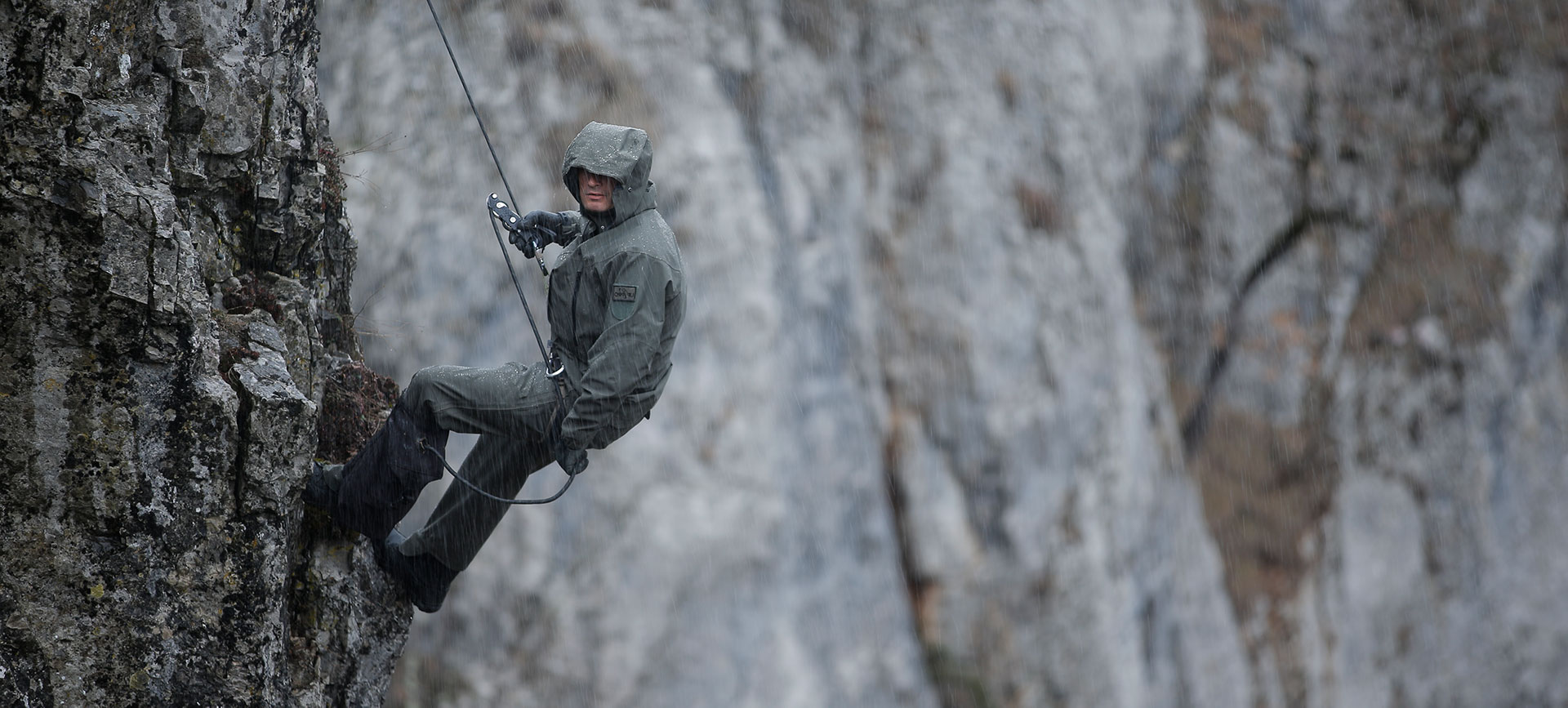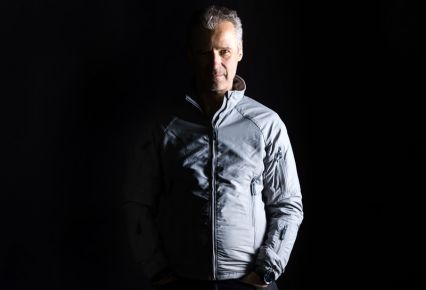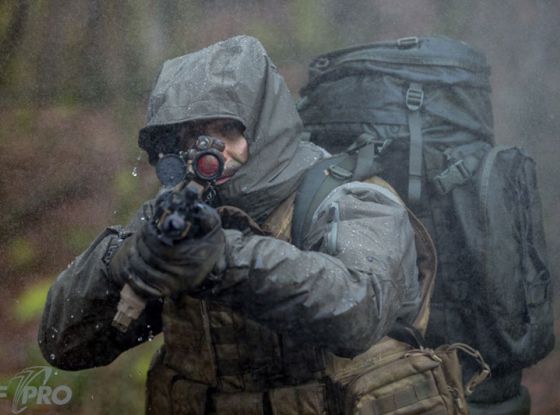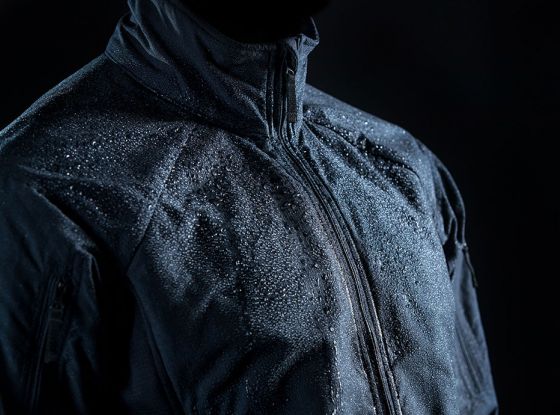Even though this constantly challenged, we know that regarding functionality, reliability and wear comfort there is currently no alternative to GORE-TEX waterproof materials available.
The very stringent GORE-TEX manufacturing standards, an integrated quality management system, specific process technologies from the seam sealing to the actual GORE-TEX laminate make sure that most of the GORE-TEX garments provide reliable protection against wind and weather.
 PERFORMANCE PARAMETERS
PERFORMANCE PARAMETERS
For the evaluation of waterproof and moisture vapour permeable (breathable) laminates the following parameters are crucial:
- Waterproofness = Water column
- Moisture vapour permeation or - permeation resistance = breathability
- Permanency of the water column and the basic textile parameters = longevity, durability
From our long standing experience, we know that up until today there is no other material, which has in total similar or better performance characteristics, compared with GORE-TEX.
But it is very important to distinguish between the various areas of end applications, for which these GORE-TEX materials have been engineered.
The typical GORE-TEX laminates for the leisure and outdoor markets, such as XCR or GORE-TEX Pro Shell laminates, are not made for the real heavy duty end use, which is required for military, police and other tactical and SF applications.
For all these applications W.L. Gore & Ass., the makers of GORE-TEX, develop laminates, which are characterized by extremely tough textile performance characteristics.
These are sometimes slightly heavier and when new, also slightly stiffer, but they are known for their extreme reliability.
In order to provide reliable rain protection, we use only these heavy duty laminates for our UF PRO Monsoon rain gear.
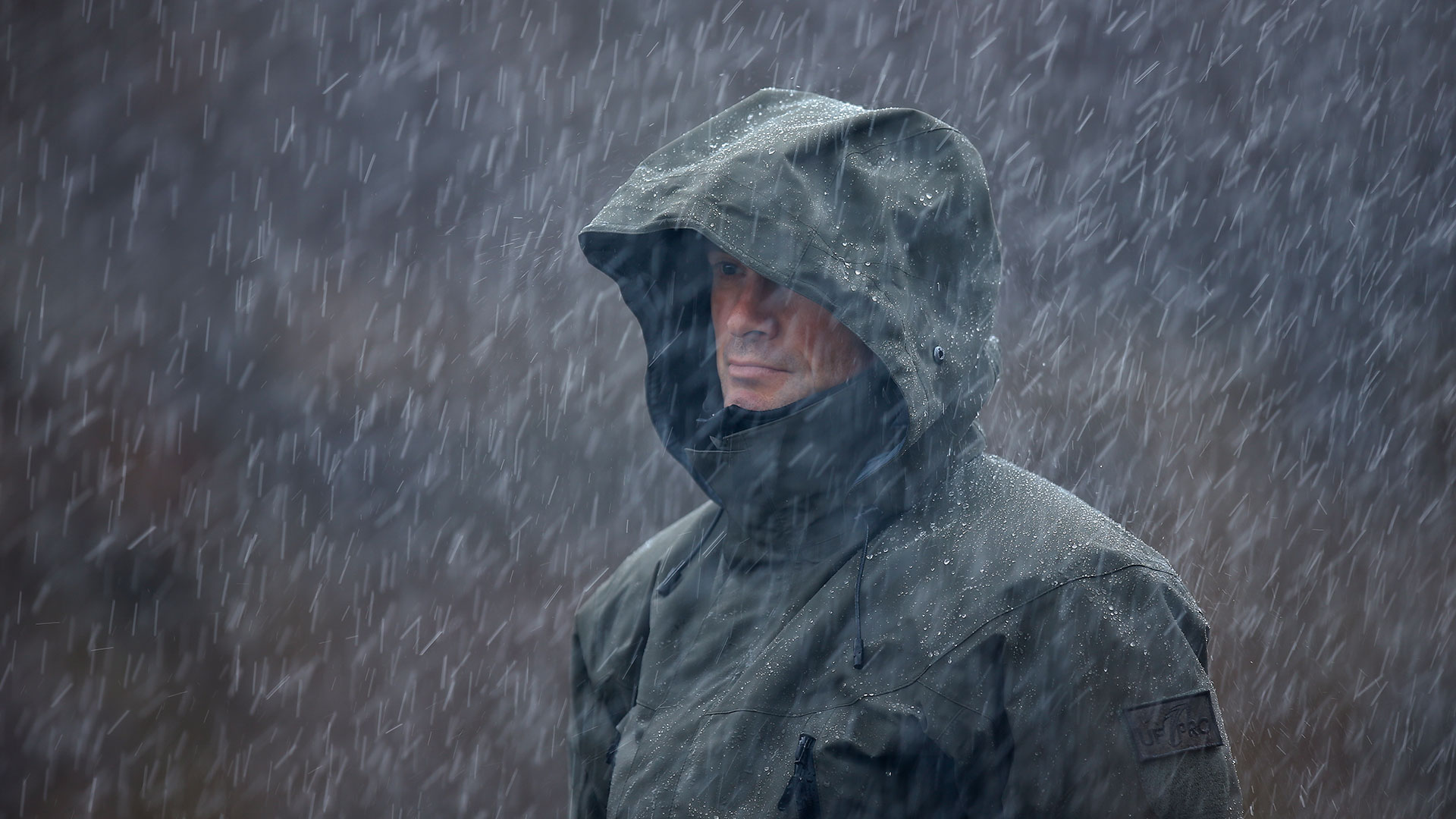
WATER COLUMN
The water column is an indicator for waterproofness, or better the level of water pressure the textile withstands before leakage.
This technical characteristic can be defined therefore either in bar, which is a technical unit for pressure, or in a water column, which is of course easier to imagine.
The conversion is: 10m of water column equals 1 bar pressure.
The specific GORE-TEX membrane, which is used for the above described heavy duty end applications, withholds a water entry pressure of almost unbelievable 150m of water column or 15 bar.
This was proven by the German Military R&D Institute (WiWEB) with a test method developed especially for the evaluation of water entry pressure of textiles.
MOISTURE VAPOUR PERMEABILITY
When defining and comparing the breathability of laminates, it is extremely important that only values are compared, which were evaluated with the identical test method.
In general there are two ways how to describe and define the capability of a textile to allow moisture to migrate through it and the results are of course two completely different values.
The quantity of water that migrates in a defined period of time through a defined area (g/m²/h). The bigger the value the better.
The resistance of a textile against the migration of water vapour. That is: Ret measured in m²/Pa/W. The smaller the value the better.
But attention!
For the evaluation of the quantity of water vapour penetration (1) there are different test methods, which deliver different results for the identical material.
That means that with test method A, the result for material X might be 5.000 g/m²/24h.
But the exact same material X might have measured with test method B a value of 20.000g/m²/24h. It is easy to imagine which confusion (willingly or unwillingly) can be created with the publication of such values.
We decided therefore that we will rather use the water vapour resistance, measured with the famous skin model, in order to characterize the so called ˝breathability˝ of our materials.
It is a unique test, which makes sure that we compare apples with apples.
This test method was developed by Jürgen Micheels at the famous Hohenstein Institutes and is today internationally accepted as the test method for measuring the breathability of textiles.
The water vapour resistance index defines, which resistance water vapour or sweat, has to overcome, when migrating through a textile. The smaller this resistance, (Ret) the better the breathability.
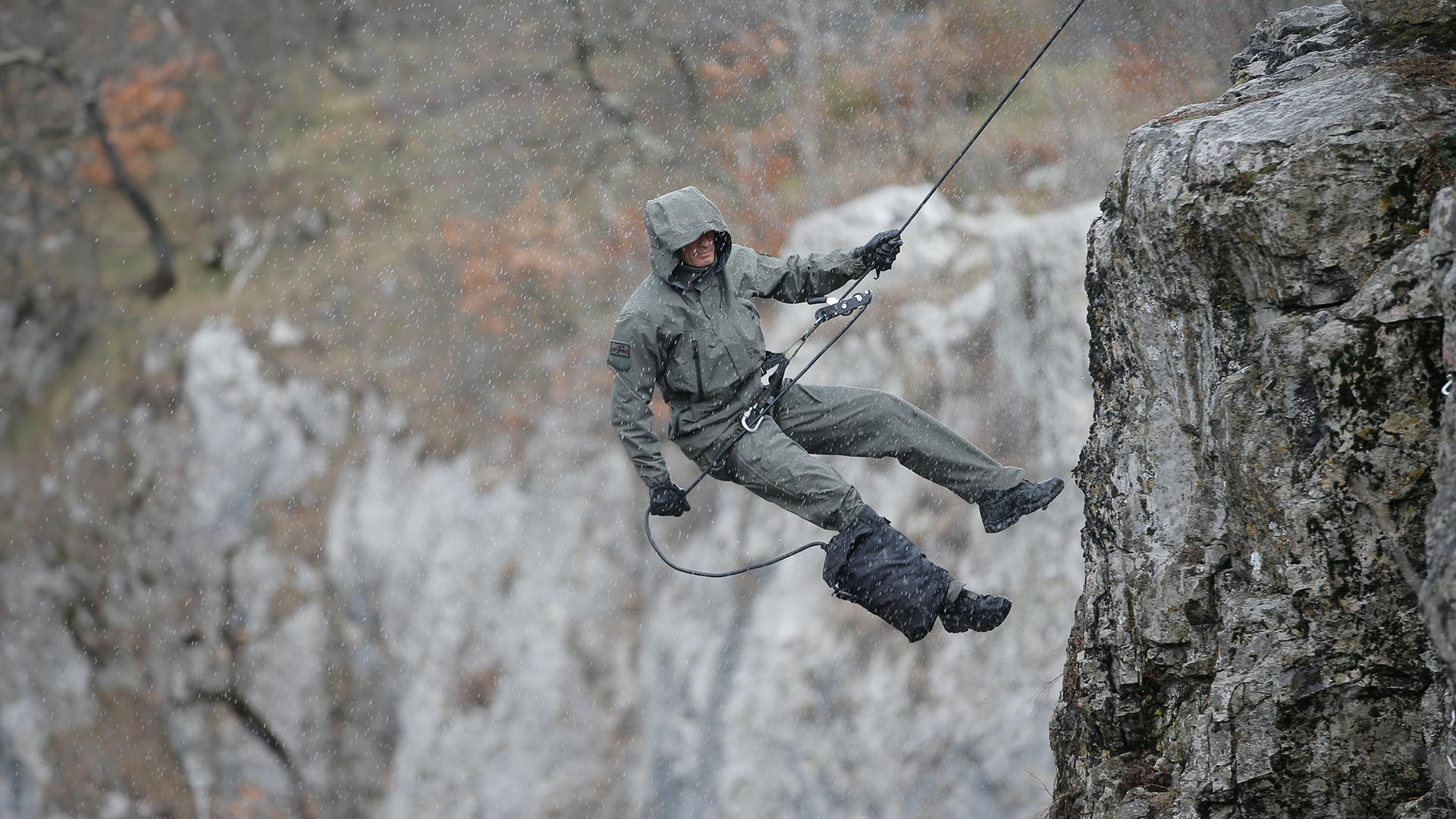
SIGN UP FOR MORE INTEL LIKE THIS.
Enter your email and stay in the know with updates about tactical clothing and other relevant topics.
You are signing up to receive updates via e-mail from which you can opt out at any time. Visit our privacy policy for more info.
PERMANENCY OF THE WATER COLUMN
For rain gear textiles the permanency of the water column of the membrane is essential for the longevity and thus reliability of the gear.
The experience with GORE-TEX membrane showed that it has especially good resistance against most of the damaging environmental influences.
Only after a perforation of the membrane with edged objects, like for example needles, leakages will occur. But this can be easily repaired by us.
TECHNICAL PARAMETERS OF GORE-TEX DARWIN THREE LAYER LAMINATE
The three layer Darwin.
- Water Column: > 150m
- Ret: < 7m²/PA/W
- Weight: 170g/m²
- Tensile Strength: > 700N
- Abrasion Resistance: > 100.000 Cycles
- Resistant against: Hydrolysis, contamination with petrol, lubricants, UV light, cold flexes at min. -40°C
- Durability of Lamination: Minimum 50 washing cycles
TECHNICAL PARAMETERS OF GORE-TEX SIENA THREE LAYER LAMINATE
The three layer Siena.
- Water Column: > 150m
- Ret: < 9m²/PA/W
- Weight: 195g/m²
- Tensile Strength: > 700N
- Abrasion Resistance: > 40.000 Cycles
- Resistant against: Hydrolysis, contamination with petrol, lubricants, UV light, cold flexes at min. -40°C,
- Durability of Lamination: Minimum 50 washing cycles

